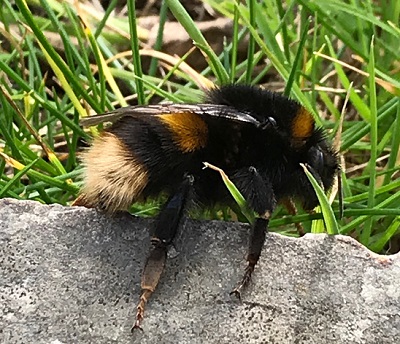Living Planet
Nature · Earth · ClimateNature Notes: March 2021
THE WINDS OF CHANGE...
'No winter lasts forever and no spring skips her turn'. Hal Borland
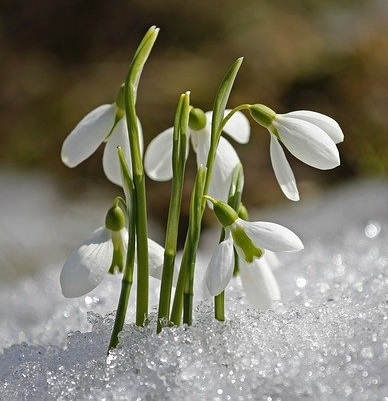
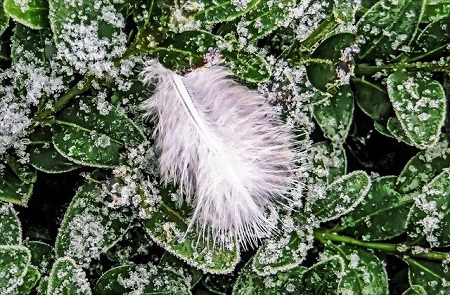
From a soft, goose-down sky, trillions of minute, cold, white specks, smaller than rain or dew, swirled. Like icing sugar, dusted through a sieve on brown chocolate cake ridges of hardening mud beneath, perhaps plucked by the wind from the top of a distant ice sheet or snowy peak in the far north-east, they settled on beds of emerald moss-clad 'tree-toes' where upright trunks met the once glossy-brown leaf litter and early February pools of mud. Further down, alongside the path, clumps of snowdrops bowed their heads in submission despite the 'anti-freeze' sap in their dagger tipped leaves. Storm Darcy, turned out to be more magical and graceful than a ballerinas pirouette, but as cold as ice; some 2-3 inches thick on the water troughs.
Much of our wildlife suffered: a wood mouse died in my gloved hand before I could put him/her in the mossy nest I'd made; a worm the shape of a pretzel lay frozen on a snowy path in the churchyard; flocks of migrant Bramblings hunkered in bunkers on the golf course; trees full of Starlings sounded like they could have had teeth, they were 'chattering' more than usual and the pink breast of a male Bullfinch wore his heart on chest as he and a flock of yellow Siskins joined the more usual garden birds at the feeders for essential food and water, in crisis survival mode. In sub-zero temperatures, biting winds and a case of devastating timing (perhaps good for farmers because of the rock solid soil) tractors were cruelly stripping tree branches, hedges and ditches in some of the field margins around the village, taking away the first signs of spring in early Blackthorn blossom and Hazel catkins, whilst destroying any last vestige of shelter for mammals and birds, startling the latter (mainly wagtails and Fieldfare near to the West, and Yellow hammers and Redwing in the fields to the East) shrieking upwards into gusty skies ...
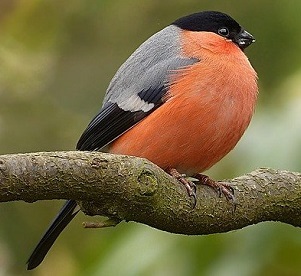

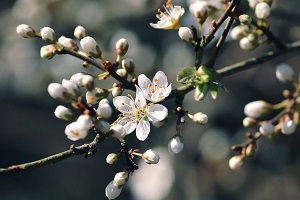
"Without hedges, England would not be England," the nature writer Richard Jefferies declared in 1884, adding, "I love their very thorns." The best hedges are made up of several different species which come into leaf, flower and fruit at different times, giving essential year-round homes, fruit, shelter and cover for all sorts of insects (including 30% of our butterflies), up to 80% of our woodland birds and 50% of our mammals. (*Figures by the RSPB).
Around now the Blackthorn's white flowers are appearing, which come out before their leaves, whereas with the Hawthorn it's the other way around. Soon, stunning sweet violets, anemones, primroses and three corned garlic should be joining the newly emerging primroses beneath. As well as also providing essential shelter and shade for farm animals and crops and reducing wind speed and soil erosion, a hedge's associated ditches and banks provide habitat for frogs, toads, newts, reptiles. And even, I discovered, usually shy, nocturnal Woodcocks, which I saw for the first time in the village and were 'out and about' in the cold-snap, flushed out of their normal camouflage leaf-piles and probing the ground for worms and beetles. You may hear the males strange croaking and sneezing calls this month, as they start to perform their 'roding' flight displays above the treetops at dawn and dusk, competing for air space with other males.

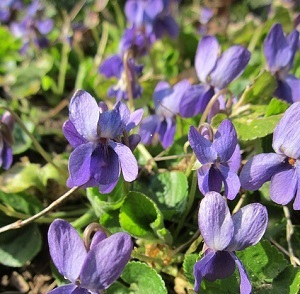
As milder temperatures have returned, so, it seems, has the very softness of Nature. The more familiar pattern of raindrops is back, each one gently patting both skin and stems, before sinking deep into already puddled paths. The crisp white has given way to surging streams of silver or, when the sun rises, rivulets of gold, laying amongst fields of the rich green grass of soon-be-spring. Frilly, jelly-like 'Brain Fungi' has been sustaining me all winter with its promise of orange sunsets to come, stroking woodland branches and Verdigris coloured lichen, with bright apricot yellow beacons against dark bark. Now crocuses of the same colour are out and soon our deciduous woodland floors will be full of the soft yellow centres of delicate anemone stars - on sunny days unfurling their sepals to reveal all their glory. Named after the Greek 'Anemos' (the God of wind), they're a timely reminder of the blustery, but hopefully still mild, days of March. Snags of shaggy sheep wool and stray strands of horse-hair streaming from barbed wire, spring flower heads nodding, buds waving, nothing is immune from being buffered, although mighty tree boughs seem to swing in tune to springs natural rhythm and the sap that's rising up their tremendous trunks.
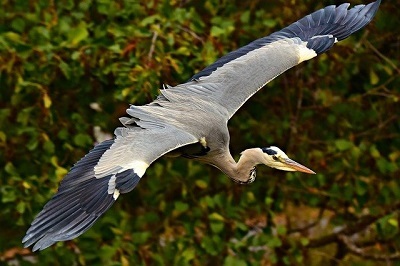
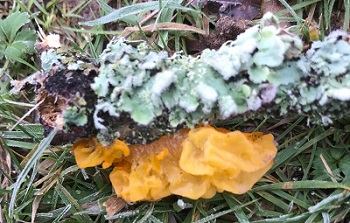
There's more 'jelly' in the clouds of vapour-blue water in ditches around paths and fields, belying the presence of late frogspawn, the annual amphibian pond orgy, somewhat delayed by the cold snap. Frogspawn are a favourite meal for many birds, including our resident and visiting Herons. More used to seeing them solitary, in several shades of grey, with a tinge of blue like the cold hues of a winter sky or the silver gleam of a swirling stream, it was a treat to see 3 together in flight over Theale, their necks coiled into an 'S' shape. (I like to think signifying 'Spring' as they're one of the first bird species to nest and breed each year, starting in early February and peaking by the end of the March). My own neck often stretched skywards, I've yet to find a 'hedge of herons', in terms of multiple nests, high up in the treetops around the village, but I did spy an unsettled Moorhen, in a branch way above the swollen river's surging current looking very much out of her comfort zone!
March is month of transition and promise, when the days grow longer, the sun climbs higher in the sky, the first butterflies and beetles flit out of their slumber and the air starts to fill with the happy hum of emerging queen bumblebees. May Zephyrs sweet breath leave the harshness of Storm Darcy a distant memory and instead usher in soft, light and uplifting, spring winds of change for us all.
